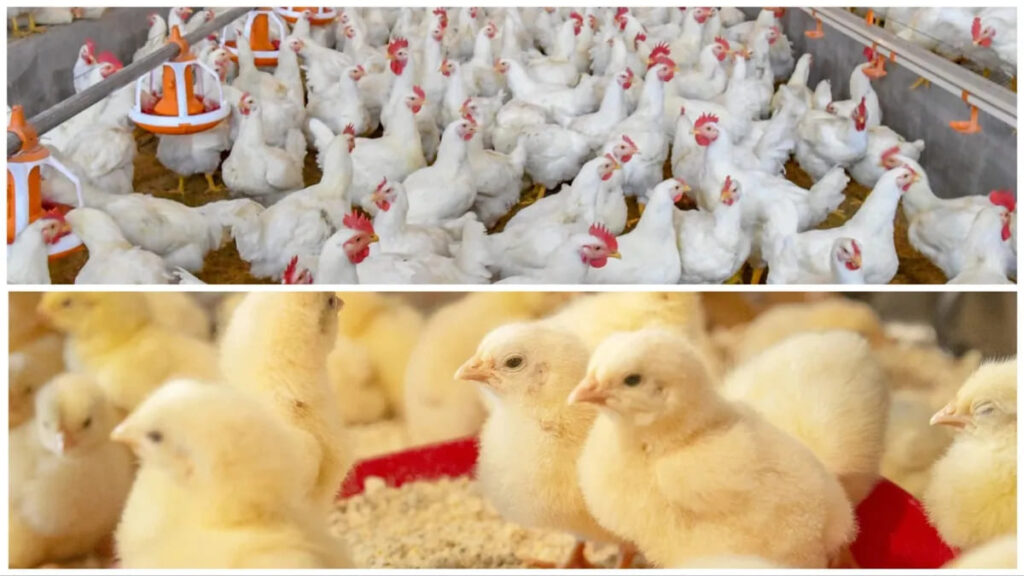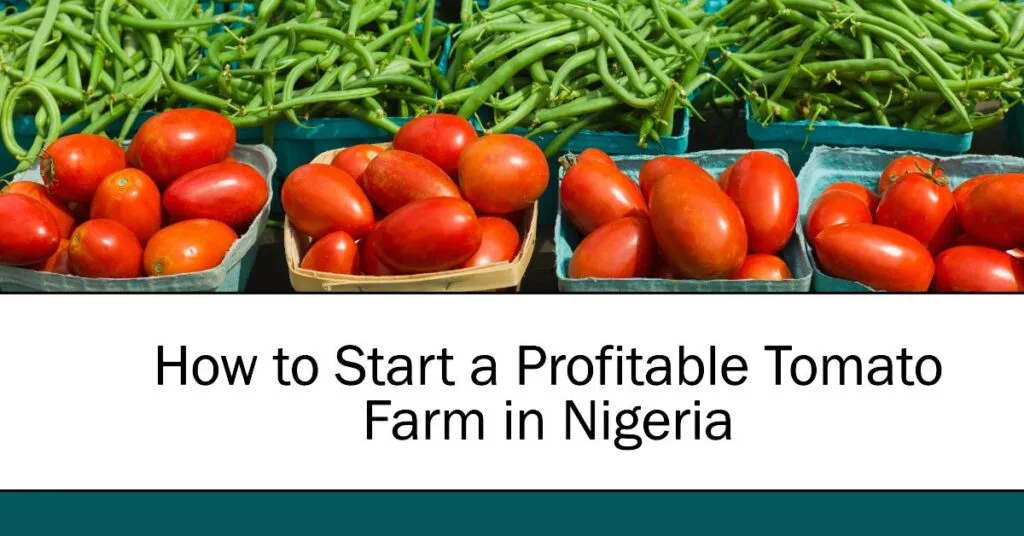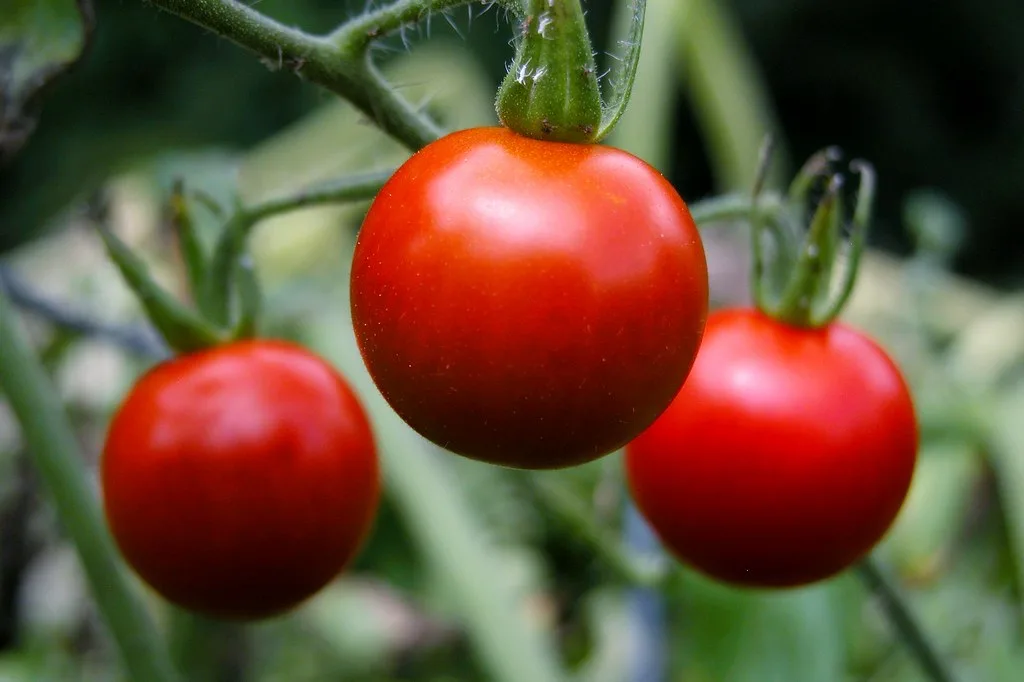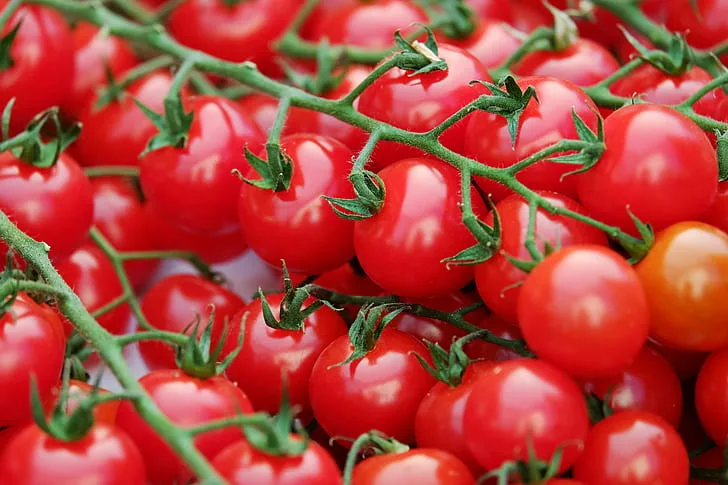Feeding broilers correctly is the most important part of poultry farming. If you’re asking, “How much feed do 100 broilers need?” you’re on the right track to managing costs, ensuring healthy growth, and maximizing profitability. The amount of feed required depends on several factors, including breed, feed quality, and management practices. However, on average, a single broiler consumes 6.8 to 8 kg of feed over a typical 6 to 8-week growing period. That means 100 broilers need approximately 680 to 800 kg of feed, or about 14 to 16 bags of 50 kg feed.
Understanding the right feeding plan helps poultry farmers avoid waste, optimize feed efficiency, and ensure healthy weight gain. This guide will break down weekly feed consumption, feed conversion ratio (FCR), factors affecting feed intake, and cost considerations to help you plan accurately.
Why Is Feed Planning Important in Poultry Farming?
Proper feed management directly impacts broiler growth, meat quality, and overall farm profitability. Here’s why estimating feed correctly is essential:
- Cost Management: Feed accounts for about 70% of the total cost in broiler production (FAO, 2024). Over- or underestimating feed can lead to financial losses.
- Growth and Performance: Broilers require a balanced diet at each stage to reach market weight efficiently. Poor feed planning can result in slow growth and lower meat yields.
- Feed Efficiency: The right amount of feed ensures birds achieve their ideal weight without excessive waste. High-quality feed with the right protein and energy content improves the feed conversion ratio (FCR).
- Preventing Health Issues: Nutritional deficiencies can lead to weak immune systems, higher mortality rates, and diseases like coccidiosis and nutritional deficiencies.
Understanding Broiler Feed Conversion Ratio (FCR) – How Do You Calculate Bags Of Feed For Broilers?
How Do You Calculate Bags Of Feed For Broilers? To Calculate the Bags of Feed for Broiler, you need to understand Feed Conversion Ration. The Feed Conversion Ratio (FCR) is the amount of feed required for a broiler to gain 1 kg of body weight. A lower FCR is better because it means the bird requires less feed to gain weight, reducing feed costs and improving profitability. It varies based on breed, feed quality, and management conditions.
- Standard commercial broilers, such as Cobb 500 and Ross 308, have an FCR between 1.5 and 1.7 (Aviagen, 2024).
- This means that to produce 2.5 kg live weight, a broiler needs about 3.75 to 4.25 kg of feed.
For 100 broilers, the total estimated feed consumption would be:
Feed Required = Target Weight × FCR × Number of Broilers (100)
2.5 × 1.6 × 100 = 400 kg of feed
However, birds eat more as they grow, so breaking this down week by week gives a more accurate estimate, which we’ll explore in detail in the next section.
Factors That Affect Feed Consumption
While the average feed requirement provides a baseline, the actual amount your broilers will consume depends on these key factors:
- Broiler Breed: Fast-growing breeds like Ross 308 have better FCR and require less feed than slower-growing breeds.
- Feed Quality: High-protein, nutrient-rich feeds reduce total consumption and improve weight gain.
- Environmental Conditions: Hot weather reduces feed intake, while cold temperatures increase it.
- Management Practices: Proper feeder spacing, clean water, and good ventilation help optimize feed efficiency.
- Health Status: Disease outbreaks and poor vaccination schedules can lead to decreased feed intake and slower growth.
In the next section, we’ll provide a detailed weekly feed breakdown for 100 broilers, so you can plan your poultry feed accurately and efficiently.
Estimating Feed for 100 Broilers
General Feed Consumption Patterns
Broilers go through three main feeding phases: Starter, Grower, and Finisher. Each phase has different nutritional requirements and feed consumption patterns.
- Starter Feed (0–2 weeks): High in protein (20–24%) for early growth.
- Feed consumption: 1.2–1.5 kg per bird (~120–150 kg for 100 broilers).
- Grower Feed (3–4 weeks): Moderate protein (18–20%) to support rapid growth.
- Feed consumption: 3–3.5 kg per bird (~300–350 kg for 100 broilers).
- Finisher Feed (5–8 weeks): Lower protein (16–18%) for efficient weight gain.
- Feed consumption: 3.6–4 kg per bird (~360–400 kg for 100 broilers).
Calculating Total Feed Needs
The total feed required for 100 broilers over 6–8 weeks is approximately 680 to 800 kg, distributed as follows:
- Starter Feed: 120–150 kg (2–3 bags of 50 kg)
- Grower Feed: 300–350 kg (6–7 bags of 50 kg)
- Finisher Feed: 360–400 kg (7–8 bags of 50 kg)
These estimates ensure broilers reach an average market weight of 2.5 kg with an optimal FCR of 1.6–1.7.
Detailed Feed Consumption Over Time
Accurately estimating feed consumption over different growth stages is crucial for cost management and proper nutrition. Below is a breakdown of feed requirements for different flock sizes and timeframes.
Feed Requirements for 50 Broilers Over 6 Weeks
For a smaller flock of 50 broilers, the feed requirement follows the same growth stages but at half the quantity needed for 100 broilers:
- Starter Feed (Week 1-2): 50 birds × 0.6 kg = 30 kg
- Grower Feed (Week 3-4): 50 birds × 1.6 kg = 80 kg
- Finisher Feed (Week 5-6): 50 birds × 2.6 kg = 130 kg
Total Feed Needed for 50 Broilers in 6 Weeks: 240 kg (5 bags of 50 kg feed)
Feed Requirements for 100 Broilers Over 6 Weeks
- Starter Feed (Week 1-2): 100 birds × 0.6 kg = 60 kg
- Grower Feed (Week 3-4): 100 birds × 1.6 kg = 160 kg
- Finisher Feed (Week 5-6): 100 birds × 2.6 kg = 260 kg
Total Feed Needed for 100 Broilers in 6 Weeks: 480 kg (10 bags of 50 kg feed)
Feed Requirements for 100 Broilers Over 12 Weeks
If you’re raising broilers beyond 6 weeks, the feed consumption increases significantly:
- Week 7-8: Each bird consumes an extra 2.2 kg, totaling 220 kg
- Week 9-10: Each bird consumes 2.5 kg, totaling 250 kg
- Week 11-12: Each bird consumes 2.8 kg, totaling 280 kg
Total Feed Needed for 100 Broilers in 12 Weeks: 1,230 kg (25 bags of 50 kg feed)
How Much Feed Do 100 Broilers Need in 8 Weeks?
For 100 broilers over 8 weeks, you’ll need approximately 450–500kg of feed, which equals 18–20 bags of 25kg, 9–10 bags of 50kg, or 4.5–5 bags of 100kg.
Broilers go through three key feeding phases:
- Starter Feed (Week 1-2) – High protein for rapid growth.
- Grower Feed (Week 3-5) – Balanced nutrients for muscle development.
- Finisher Feed (Week 6-8) – Slightly lower protein to prepare for market weight.
Total Feed Requirement Per Bird
On average, a broiler consumes about 4.5–5 kg (10–11 lbs) of feed in 8 weeks. So for 100 broilers, you’ll need around:
- 450–500 kg (990–1,100 lbs) of feed over the 8-week period.
That’s about 18–20 bags of 25 kg (55 lbs) feed bags.
Breaking It Down by Feed Type
Each phase requires different amounts of feed:
1. Starter Feed (Week 1-2)
- A single broiler eats about 1 kg (2.2 lbs) during this phase.
- For 100 broilers, that’s 100 kg (220 lbs) or about 4 bags of 25 kg feed.
2. Grower Feed (Week 3-5)
- A broiler eats about 2–2.5 kg (4.4–5.5 lbs) in this stage.
- Total for 100 broilers: 200–250 kg (440–550 lbs) or 8–10 bags of 25 kg feed.
3. Finisher Feed (Week 6-8)
- Each broiler consumes around 1.5–2 kg (3.3–4.4 lbs).
- For 100 birds: 150–200 kg (330–440 lbs) or 6–8 bags of 25 kg feed.
Daily Feed Consumption for 100 Broilers
Broilers consume feed in varying amounts each day as they grow:
- Week 1: ~12 kg per day
- Week 2: ~18 kg per day
- Week 3: ~26 kg per day
- Week 4: ~36 kg per day
- Week 5: ~44 kg per day
- Week 6: ~50 kg per day
How Many Bags of Feed Do You Need for 100 Broilers in 4 Weeks?
Raising broilers is all about efficiency—especially when it comes to feed. Since feed accounts for about 70% of total production costs, getting the right estimate is crucial to avoiding waste, reducing costs, and ensuring optimal growth.
So, how much feed do 100 broilers need in their first four weeks? Let’s break it down in a practical way, factoring in real-world broiler growth rates and feed consumption patterns.
Understanding Feed Consumption in the First Four Weeks
Broilers don’t eat the same amount every week—they start with small meals and gradually consume more as they grow. To estimate total feed usage, we look at average weekly consumption and the recommended feed type for each stage.
Week-by-Week Feed Requirements (Per Bird)
| Week | Average Feed per Bird (kg) | Total Feed for 100 Broilers (kg) |
| Week 1 | 0.15 – 0.2 kg | 15 – 20 kg |
| Week 2 | 0.35 – 0.5 kg | 35 – 50 kg |
| Week 3 | 0.75 – 0.9 kg | 75 – 90 kg |
| Week 4 | 1.2 – 1.5 kg | 120 – 150 kg |
| Total | 2.45 – 3.1 kg per bird | 245 – 310 kg for 100 broilers |
Converting to Feed Bags
Most commercial broiler feed comes in 50 kg bags. To determine how many bags you’ll need:
- Minimum Feed Requirement: 245 kg ÷ 50 kg/bag ≈ 5 bags
- Maximum Feed Requirement: 310 kg ÷ 50 kg/bag ≈ 6.2 bags
So, for 100 broilers during their first four weeks, you’ll need about 5 to 6 bags of feed. However, these numbers can vary based on feed quality, breed, and management practices.
Weekly Feed Breakdown
Here’s how the feed consumption looks on a weekly basis:
| Week | Daily Consumption | Weekly Total |
| 1 | 12 kg | 84 kg |
| 2 | 18 kg | 126 kg |
| 3 | 26 kg | 182 kg |
| 4 | 36 kg | 252 kg |
| 5 | 44 kg | 308 kg |
| 6 | 50 kg | 350 kg |
Having a clear understanding of these figures allows farmers to budget feed purchases efficiently and prevent shortages.
Importance of Water Quality in Broiler Farming
While water quantity is crucial, water quality is just as important for broiler health, feed efficiency, and overall growth. Poor water quality can lead to disease outbreaks, reduced feed intake, and lower weight gain. Here’s how to ensure clean and safe drinking water for broilers:
1. Maintain Clean Water Sources
- Use fresh, potable water free from contaminants like dirt, algae, and harmful bacteria.
- Test water regularly for pH, bacteria, and mineral content, especially if using well or borehole water. The ideal pH range for broilers is 5.5 to 7.0.
- If needed, use water filters or chlorination (1–3 ppm chlorine) to kill harmful microorganisms.
2. Clean Drinkers Daily
- Wash and disinfect water containers at least once a day to prevent biofilm buildup and bacterial growth.
- Avoid stagnant water by using automatic drinkers or nipple systems that provide fresh water continuously.
3. Prevent Water Contamination
- Keep waterers elevated and away from bedding to reduce contamination from droppings and feed particles.
- Ensure the water system is protected from rodents and wild birds, which can introduce diseases like avian flu.
4. Monitor Water Temperature
- Broilers prefer water temperatures between 10–25°C (50–77°F).
- Avoid hot or very cold water, as extreme temperatures can reduce water intake, affecting feed consumption and weight gain.
5. Use Supplements When Necessary
- Adding electrolytes and vitamins to water during heat stress or illness can improve hydration and recovery.
- Probiotics or organic acids can help maintain gut health and prevent digestive issues.
By ensuring clean, fresh, and properly maintained water, farmers can improve broiler health, enhance feed conversion efficiency, and maximize growth performance.
Feed Planning for Larger Flocks
As poultry farms scale up, feed planning becomes even more critical. Larger flocks require careful estimation to ensure sufficient supply while avoiding unnecessary costs. Below is a detailed breakdown of feed requirements for larger broiler operations.
Feed Requirements for 200 Broilers Over 6 Weeks
For a flock size of 200 broilers, feed consumption roughly doubles compared to 100 broilers:
- Starter Feed (Week 1-2): 200 birds × 0.6 kg = 120 kg
- Grower Feed (Week 3-4): 200 birds × 1.6 kg = 320 kg
- Finisher Feed (Week 5-6): 200 birds × 2.6 kg = 520 kg
Total Feed Needed for 200 Broilers in 6 Weeks: 960 kg (19 bags of 50 kg feed)
Feed Requirements for 1000 Broilers
For large-scale operations with 1,000 broilers, feed consumption increases significantly. The following breakdown helps estimate bulk feed orders:
- Starter Feed (Week 1-2): 1,000 birds × 0.6 kg = 600 kg
- Grower Feed (Week 3-4): 1,000 birds × 1.6 kg = 1,600 kg
- Finisher Feed (Week 5-6): 1,000 birds × 2.6 kg = 2,600 kg
Total Feed Needed for 1,000 Broilers in 6 Weeks: 4,800 kg (96 bags of 50 kg feed)
Proper storage is necessary when dealing with large feed quantities. Farmers should store feed in a cool, dry place to prevent spoilage and ensure nutritional quality.
Feed Planning for Larger Flocks
As poultry farms scale up, feed planning becomes even more critical. Larger flocks require careful estimation to ensure sufficient supply while avoiding unnecessary costs. Below is a detailed breakdown of feed requirements for larger broiler operations.
Feed Requirements for 200 Broilers Over 6 Weeks
For a flock size of 200 broilers, feed consumption roughly doubles compared to 100 broilers:
- Starter Feed (Week 1-2): 200 birds × 0.6 kg = 120 kg
- Grower Feed (Week 3-4): 200 birds × 1.6 kg = 320 kg
- Finisher Feed (Week 5-6): 200 birds × 2.6 kg = 520 kg
Total Feed Needed for 200 Broilers in 6 Weeks: 960 kg (19 bags of 50 kg feed)
Feed Requirements for 1000 Broilers
For large-scale operations with 1,000 broilers, feed consumption increases significantly. The following breakdown helps estimate bulk feed orders:
- Starter Feed (Week 1-2): 1,000 birds × 0.6 kg = 600 kg
- Grower Feed (Week 3-4): 1,000 birds × 1.6 kg = 1,600 kg
- Finisher Feed (Week 5-6): 1,000 birds × 2.6 kg = 2,600 kg
Total Feed Needed for 1,000 Broilers in 6 Weeks: 4,800 kg (96 bags of 50 kg feed)
Proper storage is necessary when dealing with large feed quantities. Farmers should store feed in a cool, dry place to prevent spoilage and ensure nutritional quality.
Proper Storage of Poultry Feed
When dealing with large feed quantities, proper storage is essential to prevent spoilage, nutrient loss, and contamination by mold or pests. Poor storage conditions can lead to feed wastage, reduced bird performance, and increased disease risks. To maintain feed quality, farmers should follow these best practices:
- Store Feed in a Cool, Dry Place – High humidity and heat can cause mold growth, which produces harmful mycotoxins that negatively affect broiler health. Keep feed in a well-ventilated area away from direct sunlight.
- Use Airtight Containers or Bags – Store feed in sealed bins, plastic containers, or heavy-duty feed bags to protect against moisture, rodents, and insects. Avoid leaving feed exposed in open sacks.
- Keep Feed Off the Ground – Stack feed bags on wooden pallets or shelves rather than directly on concrete floors, which can retain moisture and encourage mold.
- Rotate Stock Regularly – Use the first-in, first-out (FIFO) method to prevent feed from becoming stale. Always finish older stock before opening new bags.
- Protect from Pests – Rodents and insects can contaminate feed, leading to diseases and losses. Use rat-proof containers, traps, and proper sanitation to minimize infestations.
- Avoid Excess Storage – Feed loses nutritional value over time, especially vitamins and fats. Farmers should buy only as much feed as needed for 1–2 months to ensure freshness.
By following these storage guidelines, farmers can maintain feed quality, prevent waste, and support optimal broiler growth.
Feed Types and Their Impact
Different types of feed play a crucial role in broiler growth. The three primary feed types—starter, grower, and finisher—are formulated to meet the nutritional needs of broilers at different stages of development.
Starter, Grower, and Finisher Feeds
1. Starter Feed (0-2 Weeks)
- High in protein (20-24%) for rapid initial growth
- Contains essential amino acids for muscle development
- Crumbled or pelleted for easy digestion
2. Grower Feed (3-4 Weeks)
- Moderate protein content (18-20%) to support muscle gain
- Balanced energy levels for steady weight gain
- Larger pellet size to encourage proper feeding
3. Finisher Feed (5-6 Weeks and Beyond)
- Lower protein (16-18%) with higher energy to promote final weight gain
- Improves meat quality and feed conversion efficiency
- Pelletized for efficient feeding
Mixing Grower and Finisher Feeds
Some farmers mix grower and finisher feeds to balance cost and weight gain. While this can work, it’s important to maintain proper protein and energy levels to avoid stunted growth or excess fat deposition. A recommended approach is transitioning gradually rather than abruptly switching feeds.
Foods That Promote Faster Growth
To boost broiler growth, consider adding the following to their diet:
- Maize or corn – High-energy grain that supports weight gain
- Soybean meal – Excellent protein source for muscle development
- Fish meal – Rich in omega-3 fatty acids and proteins
- Amino acid supplements – Enhances overall feed efficiency
- Probiotics and enzymes – Improve digestion and nutrient absorption
Ensuring broilers have access to clean water at all times is also essential. Dehydration can reduce feed intake and slow down growth rates.
Feeders and Feeding Practices
Proper feeder management ensures efficient feed utilization, reduces wastage, and promotes uniform growth among broilers. Here’s what you need to know:
Number of Feeders Needed for 100 Broilers
The number of feeders required depends on the type of feeder and the feeding space per bird. The recommended guidelines include:
- Trough Feeders: At least 2 to 3 meters of total feeding space
- Round/Tube Feeders: 4-5 feeders for 100 broilers
- Automatic Feeders: A single large-capacity feeder may be sufficient if evenly distributed
Broilers should have easy access to feeders to prevent competition and ensure uniform growth. Overcrowding around feeders can lead to weaker birds being outcompeted for feed.
Effective Feeding Strategies
Implementing smart feeding strategies can improve feed efficiency and reduce costs:
- Use the Right Feeder Type: Choose feeders that minimize spillage and allow easy access.
- Adjust Feeder Height: Keep feeders at back level to prevent waste and encourage proper intake.
- Follow a Feeding Schedule: Provide feed at regular intervals to maintain steady growth.
- Monitor Feed Conversion Ratio (FCR): Keep track of feed intake versus weight gain to ensure efficiency.
- Minimize Feed Contamination: Keep feeders clean and dry to prevent mold growth and infections.
Feed Planning for Layers
Proper feed planning is just as crucial for layer hens as it is for broilers. Laying hens require a balanced diet to support consistent egg production, maintain health, and optimize feed efficiency.
Weekly Feed Requirements for 100 Layers
Laying hens consume different amounts of feed at various stages of their production cycle. On average, a fully matured layer (18 weeks and above) consumes about 110–125 grams of feed per day. For 100 layers, this equals:
- Daily Feed Requirement: 11–12.5 kg
- Weekly Feed Requirement: 77–87.5 kg
- Monthly Feed Requirement: 308–350 kg
Breakdown of Feed Requirements by Growth Phase
| Stage | Age (Weeks) | Feed Type | Daily Feed per Bird (g) | Weekly Feed for 100 Birds (kg) |
| Chick Phase | 0–6 | Chick Starter | 40–50 | 28–35 |
| Grower Phase | 7–18 | Grower Feed | 80–90 | 56–63 |
| Layer Phase | 19+ | Layer Feed | 110–125 | 77–87.5 |
Factors Affecting Feed Consumption in Layers
- Egg Production Rate: High-producing hens eat more to meet energy needs.
- Weather Conditions: Hot weather reduces feed intake, while cold weather increases it.
- Feed Quality: Nutrient-dense feeds reduce overall consumption but improve performance.
- Management Practices: Proper feeder spacing and feeding schedules optimize intake.
Cost Considerations for Feeding Layers
The cost of feeding 100 layers per month varies based on local feed prices. Assuming an average price of $0.40 per kg of layer feed, the estimated monthly cost would be:
- Low Estimate (308 kg x $0.40) = $123.20
- High Estimate (350 kg x $0.40) = $140.00
Poultry farmers can reduce feed costs by incorporating homemade feed formulations, supplementing with kitchen waste, and optimizing feeding schedules.
Homemade Feed Considerations: Risks and Best Practices
Many poultry farmers choose homemade feed as a cost-saving alternative to commercial feed. While this can reduce expenses, it comes with risks—nutritional imbalances, poor growth rates, and disease susceptibility. Proper formulation is key to ensuring broilers receive all essential nutrients for optimal weight gain and health.
1. Risks of Poorly Formulated Homemade Feed
Without proper balance, homemade feed can lead to:
- Protein Deficiency: Slower growth, weak muscles, and poor feed conversion.
- Energy Imbalance: Too little energy leads to stunted growth, while too much can cause excess fat.
- Vitamin & Mineral Deficiency: Weak immune systems, bone deformities, and increased mortality.
- Poor Feed Conversion Ratio (FCR): Inefficient feed-to-weight gain ratio, leading to higher feed costs.
2. Key Ingredients for a Balanced Homemade Feed
A well-balanced broiler diet should include:
- Energy Sources: Maize, wheat, sorghum, or cassava.
- Protein Sources: Soybean meal, fish meal, groundnut cake, or black soldier fly larvae.
- Fiber Sources: Wheat bran or rice bran (should not exceed 7% of the diet).
- Minerals & Vitamins: Bone meal, limestone, vitamin premixes, and salt.
- Essential Additives: Probiotics, amino acids (lysine, methionine), and toxin binders to improve gut health and digestion.
3. Importance of Professional Guidance
- Consulting a poultry nutritionist ensures the correct balance of nutrients for optimal growth and efficiency.
- Farmers can use feed formulation software or guides from reputable sources (FAO, poultry research institutes) to create properly balanced rations.
- Regularly monitor broiler weight gain and adjust feed formulations if necessary.
4. Quality Control and Feed Storage
- Use only high-quality, mold-free ingredients to prevent contamination.
- Store homemade feed in a cool, dry place to avoid spoilage, pests, and mycotoxin formation.
- Mix fresh feed in small batches to prevent nutrient loss over time.
While homemade feed can save costs, nutritional precision is essential. A well-formulated diet improves broiler growth, feed efficiency, and profitability, ensuring healthy birds and sustainable poultry farming.
Tools and Resources
Accurate feed planning is crucial for the success of poultry farming. Utilizing specialized tools and resources can assist farmers in optimizing feed efficiency, managing costs, and ensuring the health and productivity of their flocks. Below are some recommended tools and resources:
Feed Calculation Tools
- RCR Organic Feed Store’s Laying Hen Feed Calculator: This tool estimates the amount of organic feed required for laying hens at different growth stages, aiding in precise feed budgeting. rcrorganicfeedstore.com
- Capital Foods’ Broiler Feed Calculator: Designed for broiler farmers, this calculator determines the feed cost based on the number of chicks, providing insights into financial planning. capitalfoods.co.zw
- Nova Feeds’ Poultry Feed Calculators: These calculators help estimate monthly feed requirements for broilers, assisting in inventory management and cost estimation. novafeeds.co.za
- Mile Four’s Chicken Feed Cost Calculator: This tool helps backyard chicken keepers set a feed budget by calculating the cost based on the number and age of birds.milefour.com
- FeedCalculator App: A mobile application that generates least-cost, high-quality feed recipes based on locally available ingredients, promoting cost-effective and sustainable feed management. play.google.com
Additional Resources
- Humble Hills Homestead’s Homemade Chicken Feed Calculator: For farmers interested in formulating their own feed, this calculator assists in balancing protein, fat, and cost, ensuring nutritional adequacy. humble-hills-homestead.com
- Novatek’s Broiler Feed Program: Provides a five-phase feeding program for broilers, formulated to ideal protein and amino acid levels, ensuring optimal growth and feed efficiency. novatekanimalfeeds.com
By leveraging these tools and resources, poultry farmers can enhance their feed management practices, leading to healthier flocks and improved profitability.
FAQs
1. How much feed does a broiler eat per day?
On average, a broiler consumes between 90–180 grams of feed per day, depending on its age and growth phase. Younger birds eat less, while older birds nearing market weight consume more.
2. How many bags of feed do I need for 100 broilers?
For a 6-week production cycle, 100 broilers will need about 14–16 bags (50 kg each) of feed. For an 8-week cycle, this increases to 18–20 bags.
3. What is the best feed type for broilers?
Broilers require different feed formulations at each stage:
- Starter Feed (0–3 weeks): High protein (22–24%) to support early growth.
- Grower Feed (4–5 weeks): Moderate protein (18–20%) for muscle development.
- Finisher Feed (6 weeks+): Lower protein (16–18%) to maximize weight gain before slaughter.
4. Can I mix my own broiler feed?
Yes, but it requires careful formulation to ensure proper nutrient balance. Many farmers mix maize, soybean meal, fish meal, wheat bran, and vitamin/mineral premixes to create cost-effective homemade feed.
5. How can I reduce broiler feed costs?
- Buy feed in bulk to get discounts.
- Use feed conversion ratio (FCR) tracking to minimize waste.
- Incorporate alternative feed sources like black soldier fly larvae or fermented feed.
- Ensure proper feeder management to prevent spillage.
6. How much does it cost to feed 100 broilers?
The cost depends on local feed prices. Assuming a feed price of $0.50 per kg, feeding 100 broilers for 6 weeks would cost $340–$400. For 8 weeks, the cost rises to $450–$500.
7. Do broilers need feed at night?
Broilers benefit from 24-hour feeding during the first few weeks. However, some farmers implement restricted night feeding after 4 weeks to improve feed conversion efficiency.
8. What is the best feeding schedule for broilers?
- 0–2 weeks: Feed 5–6 times a day.
- 3–4 weeks: Reduce to 3–4 times a day.
- 5–6 weeks: Feed twice daily, ensuring feeders are always filled.
- 7 weeks+: Offer feed in measured amounts to control weight gain.
9. How much water do broilers need?
Broilers require twice as much water as feed. A flock of 100 broilers will consume 20–30 liters of water daily, increasing with age and temperature.
10. What is the feed conversion ratio (FCR) for broilers?
FCR measures how efficiently feed is converted into body weight, with a lower FCR indicating better feed efficiency. A good FCR for broilers is 1.5–1.8, meaning they gain 1.5–1.8 kg of weight per 2.5–3 kg of feed consumed.
Conclusion
Accurately estimating feed requirements for broilers is essential for profitability and efficiency in poultry farming. By understanding the feed consumption patterns, cost implications, and feeding strategies, farmers can make informed decisions that optimize growth while minimizing waste. Whether you’re raising 100 broilers or scaling up to 1,000 or more, having a clear feed plan helps ensure healthy birds, strong financial returns, and a sustainable farm operation.
To maximize success, always consider factors like feed conversion ratio (FCR), nutrient balance, and cost-effective feeding strategies. By implementing the insights from this guide, poultry farmers can achieve better feed efficiency and improved broiler production outcomes.




